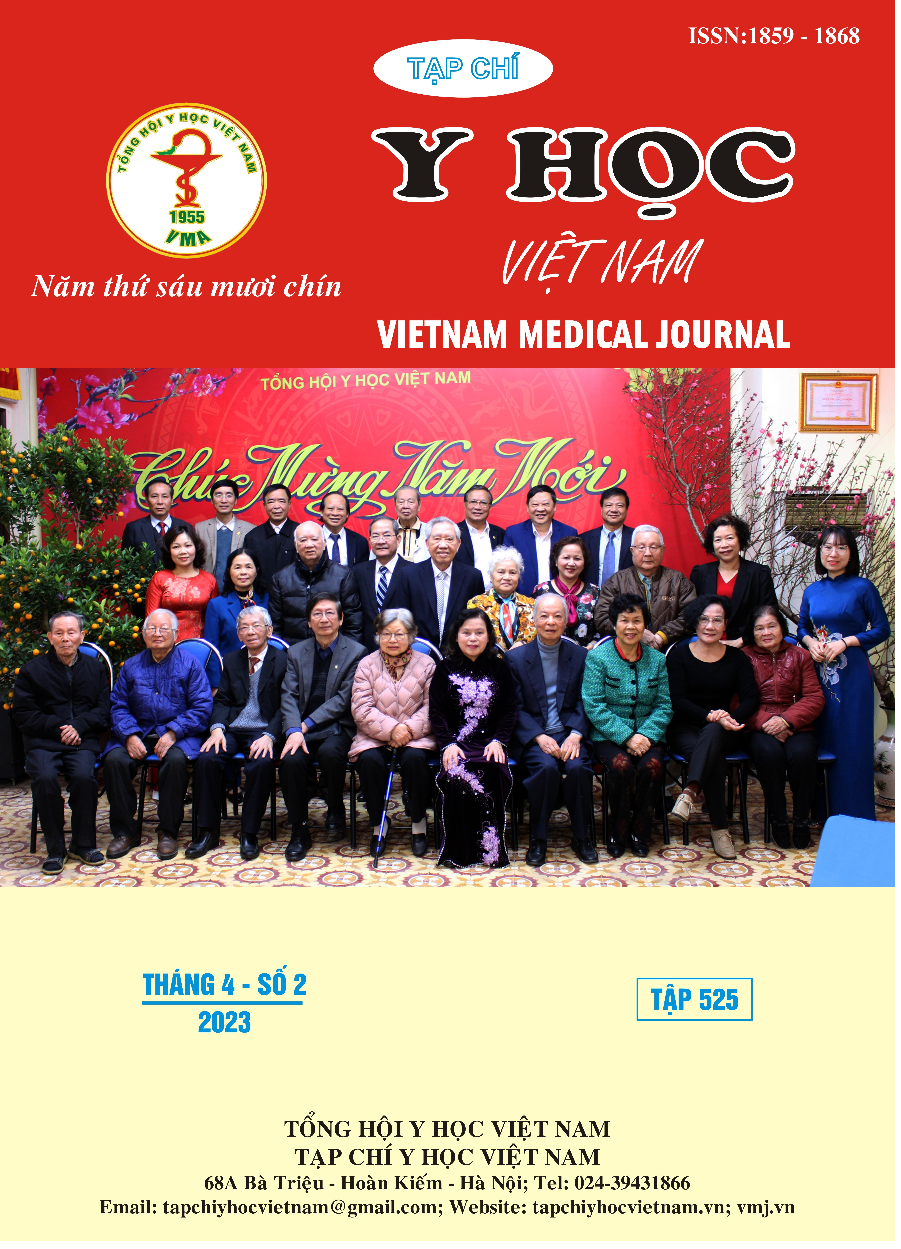EVALUATION OF TREATMENT RESULTS OF RELAPSED OR REFRACTORY DIFFUSE LARGE B-CELL LYMPHOMA AT CHO RAY HOSPITAL AND BLOOD TRANSFUSION HEMATOLOGY HOSPITAL
Main Article Content
Abstract
Objectives: This study was conducted to investigate the treatment results of relapsed or refractory diffsue large B-cell at Cho Ray Hospital and Blood Transfusion Hematology Hospital. Patients and methods: 104 patients (≥18 years old) were diagnosed with relapsed or refractory diffuse large B-cell lymphoma at Cho Ray Hospital and Blood Transfusion Hematology Hospital. Study design: retrospective and prospective, case series description. Results: The complete response rate (CR) was 63.5% at interim treatment and 45.8% at the end of treatment. Three year-OS, PFS of the patients with relapsed or refractory DLBCL were 37.5±3.9%, 18.3±4.4%, respectively. The rate of CR and OS in the group of patients treated with autologous stem cell transplantation was higher than the group treated without transplantation (p<0.05). The rate of CR and survival time were higher in the late relapse group than in the early relapse and refractory group; however, the difference is not statistically significant. The main adverse events were hematologic toxicity, elevation of liver enzymes, and infection. ESHAP±R and DHAP±R regimens have higher hematological toxicity than other regimens. The DHAP±R regimen had the highest nephrotoxicity with an increase in creatinine of 57.1%. Treatment-related mortality (TRM) was 20.2% and 100% of which were due to infection. Conclusion: The treatment of relapsed or refractory DLBCL gives positive results, especially in the group of patients receiving high-dose chemotherapy followed by autologous stem cell transplant. The group of patients with late relapse had higher rates of CR and extended OS than patients with early relapse and refractory disease. However, the rate of hematological complications and infection after chemotherapy is quite high, so it is necessary to prevent neutropenia, monitor and promptly treat infectious complications after neutropenia.
Article Details
References
2. Gisselbrecht, C., et al. (2010), "Salvage regimens with autologous transplantation for relapsed large B-cell lymphoma in the rituximab era", J Clin Oncol. 28(27), pp. 4184-90.
3. Philip, T., et al. (1995), "Autologous bone marrow transplantation as compared with salvage chemotherapy in relapses of chemotherapy-sensitive non-Hodgkin's lymphoma", N Engl J Med. 333(23), pp. 1540-5.
4. Press, O. W., et al. (1991), "Treatment of relapsed non-Hodgkin's lymphomas with dexamethasone, high-dose cytarabine, and cisplatin before marrow transplantation", Journal of Clinical Oncology. 9(3), pp. 423-431.
5. Crump, M., et al. (2014), "Randomized comparison of gemcitabine, dexamethasone, and cisplatin versus dexamethasone, cytarabine, and cisplatin chemotherapy before autologous stem-cell transplantation for relapsed and refractory aggressive lymphomas: NCIC-CTG LY.12", J Clin Oncol. 32(31), pp. 3490-6.
6. Kluin-Nelemans, H. C., et al. (2001), "Standard chemotherapy with or without high-dose chemotherapy for aggressive non-Hodgkin's lymphoma: randomized phase III EORTC study", J Natl Cancer Inst. 93(1), pp. 22-30.
7. Martín, A., et al. (2008), "R-ESHAP as salvage therapy for patients with relapsed or refractory diffuse large B-cell lymphoma: the influence of prior exposure to rituximab on outcome. A GEL/TAMO study", Haematologica. 93(12), pp. 1829-36.
8. Ohmachi, K., et al. (2013), "Multicenter phase II study of bendamustine plus rituximab in patients with relapsed or refractory diffuse large B-cell lymphoma", J Clin Oncol. 31(17), pp. 2103-9.


